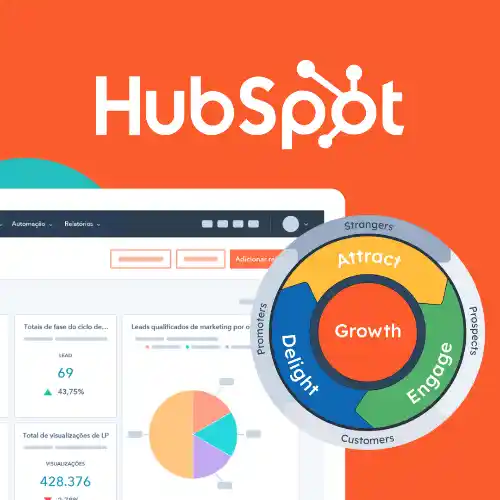CRM with HubSpot
HubSpot CRM is a comprehensive and user-friendly platform designed to help businesses manage their customer relationships, sales processes, and marketing efforts. Below is an in-depth guide on using HubSpot CRM effectively.
Getting Started with HubSpot CRM
1. Sign Up and Basic Setup
- Register for an Account: Go to the HubSpot website and sign up for a free account or choose a suitable pricing plan for more advanced features.
- Company Profile: Set up your company profile, including basic information like company name, website, and industry.
- User Accounts: Add team members and assign roles and permissions.
2. Importing Data
- Contacts and Companies: Import existing customer data from spreadsheets, other CRMs, or email clients.
- Deals and Pipelines: Import existing deals and configure sales pipelines to match your sales process.
- Data Cleanup: Ensure imported data is accurate and free of duplicates.
Key Features of HubSpot CRM
1. Contact Management
- Profiles: Create detailed profiles for contacts and companies with interaction history.
- Segmentation: Segment contacts based on criteria like behavior, demographics, and lifecycle stage.
2. Sales Pipeline Management
- Pipeline Stages: Customize sales stages to reflect your sales process.
- Deal Tracking: Track deal progress and forecast sales.
- Automation: Automate follow-up emails and task reminders.
3. Email Integration
- Email Syncing: Connect HubSpot CRM with email clients like Gmail and Outlook to log emails and schedule follow-ups.
- Templates and Sequences: Create email templates and automated sequences for outreach and follow-up.
4. Task and Activity Management
- Task Assignment: Assign tasks to team members and set deadlines.
- Activity Logging: Log calls, meetings, and emails directly within the CRM.
- Calendar Integration: Sync with calendars to schedule and manage meetings.
5. Marketing Automation
- Email Campaigns: Design and send personalized email campaigns.
- Lead Scoring: Score leads based on engagement and activity.
- Campaign Analytics: Monitor the performance of marketing campaigns.
6. Customer Service Tools
- Ticketing System: Manage customer inquiries and support tickets.
- Live Chat and Bots: Provide real-time support with live chat and chatbots.
- Knowledge Base: Create a self-service portal with articles and FAQs.
7. Reporting and Analytics
- Custom Reports: Generate reports on sales performance, deal stages, and marketing efforts.
- Dashboards: Use dashboards for real-time insights into key metrics.
- Analytics: Analyze data to identify trends and make data-driven decisions.
Integration and Customization
1. Integrations
- HubSpot Tools: Integrate with other HubSpot tools like Marketing Hub, Sales Hub, and Service Hub.
- Third-Party Apps: Connect with applications through the HubSpot Marketplace.
- APIs: Use HubSpot’s APIs for custom integrations.
2. Customization
- Custom Properties: Define custom properties for contacts, companies, and deals to capture specific information.
- Workflows: Create automated workflows for tasks like lead nurturing and deal follow-ups.
- Templates and Sequences: Customize email templates and sequences to fit your communication style.
Best Practices for Using HubSpot CRM
1. Regular Data Updates
- Keep your contact information current and accurate.
- Regularly clean up and de-duplicate your data.
2. Consistent Usage
- Ensure all team members consistently use the CRM to log activities and update deal statuses.
- Provide ongoing training and support to encourage CRM adoption.
3. Leverage Automation
- Automate routine tasks to save time and reduce manual effort.
- Use marketing automation to send targeted and personalized communications.
4. Analyze and Optimize
- Regularly review reports and dashboards to monitor performance.
- Use insights from analytics to refine your sales and marketing strategies.
5. Engage with the HubSpot Community
- Participate in HubSpot Academy for courses and certifications.
- Join community forums and user groups to share knowledge and learn from others.
